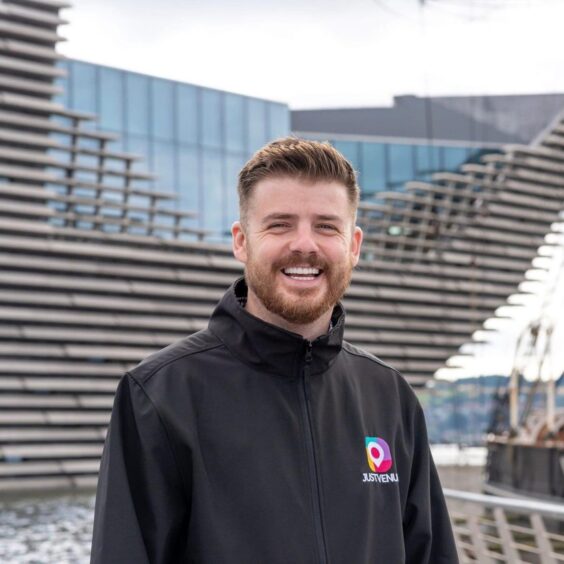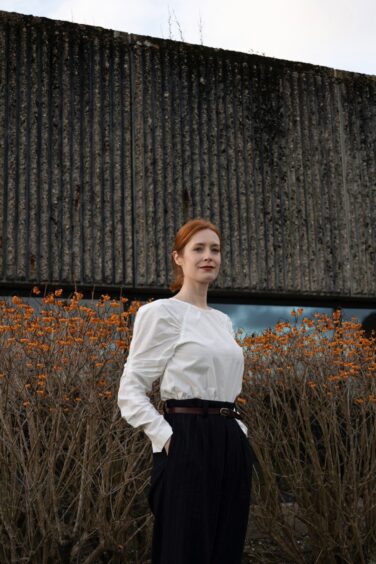
Debate around Dundee’s waterfront development was reignited last week when builders broke ground on controversial Site 6.
The site, which sits next to the Agnes Husband House, across from the V&A, is set to have a six-storey office block built on it by 2025.
The £26 million James Thomson House plan has sparked both eagerness and ire, with citizens expressing concerns over the views at the waterfront, and a failure to prioritise the need for social housing or community facilities above ‘unnecessary’ office space.
Meanwhile Dundee City Council leader John Alexander has assured critics that the site had already attracted ‘significant interest’ from business leaders.
For Fintry businessman Jamie Shankland, who owns companies in both the oil and gas and tech industries, the new office block is a welcome move.
Make Dundee a ‘cooler, more hip’ city
“The people of Dundee have quite a negative outlook, I think,” says Jamie, 35, who was born in Fintry and still stays there.
“Whenever there’s something good happening in the city, for whatever reason, we don’t really like getting behind it.
“The development, from what was proposed to what it is now, hasn’t really changed,” he observes. “And I can see why they’re doing it.
“If they build the office block, that’ll attract external people into the city which then causes a bit of desirability around it – because if you have larger organisations in a city, other ones are attracted to that.
“And then over time, that should, in theory, push the rent rates and occupancy up on the other buildings, because it’s now the city that everybody wants to come to.
“There’s always people looking for space. So why not have nice new, modern office blocks?
“Then the restaurants and coffee shops round about can thrive, and more retail and hospitality things would come in, as there’d be more people in the area going to work every day.
“The wealth generation that’s going to come from it and the external investment, and attraction to the city for companies, is worth the little bit of heartache that we need to go through now.
“When the city starts to come on and there’s more money in the city’s pocket, the people will forget that.”
As for the argument that the proposed design could impinge on the iconic views provided by the V&A and current waterfront skyline, Jamie disagrees.
“I don’t think it takes away from the views,” he says. “When you look at the other buildings down there – the facelift on the train station, the social security building directly in front of the V&A – personally, I think it makes the city look more modern.
“I go to Belfast quite a lot for work, and Belfast is a really modern looking city. Dundee is needing bigger buildings with nicer facades to make it a cooler, more hip city.
“And what was there before? The old Dundee City Council building and all the bridges that went over to the Olympia, and to the casino. It wasn’t the best view in the first place.
“If you want the views, just go to the other side of the V&A!”
‘Copy and paste’ buildings risk losing Dundee’s character
However, author and journalist Gabriella Bennett, who writes on architecture and the built environment, believes developers “need to be careful” with the designs they put in the city’s prime spots.
“This is such a landmark opportunity for a Scottish city to build on this large area of land that hasn’t got much on it,” explains Gabriella, who lives in Invergowrie.
“The risk of developing somewhere like the waterfront, is that you lose the sense of a vision of what you want the new Dundee to be.
“You look at something like the V&A Dundee, and you see this hugely ambitious project by a prestigious architect, operating on a global stage. What you put around that, you need to be careful with.
“Not all buildings on the waterfront development will have that kind of architectural clout. And they’re not always going to be as distinctive – and that’s a good thing, as it would be a case of having too many ostentatious designs.
“But you have to be careful to not go too far the other way, by making a block so homogenous that it could be anywhere.”
For Gabriella, the James Thomson House plans are concerningly ‘anonymous’ in nature, despite being named after the beloved Dundee architect.
“The plans for Site 6 show a fairly anonymous block of offices,” she notes.
“When a piece of design goes up like this, and it’s named after something or someone with a tie to the city, it’s kind of the architectural equivalent of whitewashing – trying to show that this building is rooted to the site when actually, that needs to be done more form a design perspective, not just a naming perspective.
“The city’s skyline is really important, and there’s a risk, when we’re building these ‘copy and paste’ identikit buildings, that we lose a sense of the vernacular of the site.”
And there’s a worry that what is ‘hip’ right now will age quickly in the fast-moving world of design.
“I wonder, with this anonymous, block-type architecture, what is that going to look like in 20 years’ time,” she muses.
“We don’t want to get into a cycle of just tearing down buildings because they have not aged well, because there’s so much glass on them that needs maintenance and cleaning all the time.
“So I do think we have to be a wee bit careful.”



Conversation